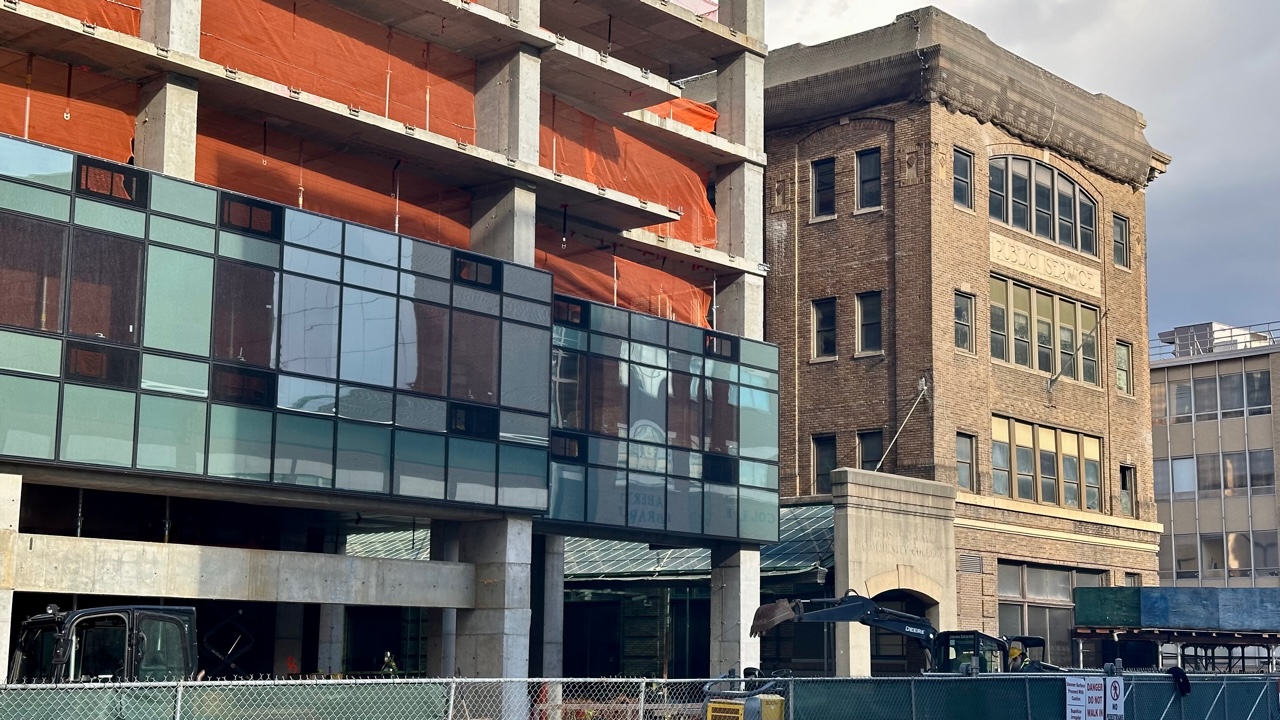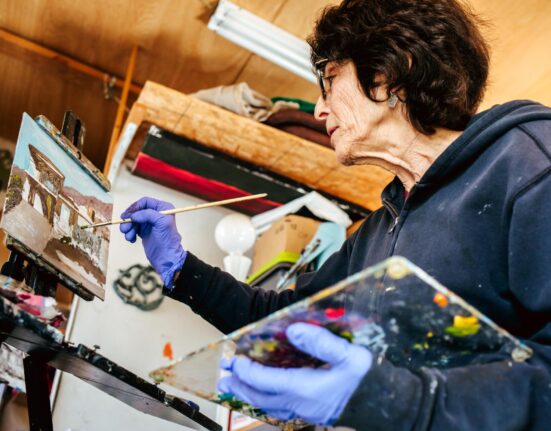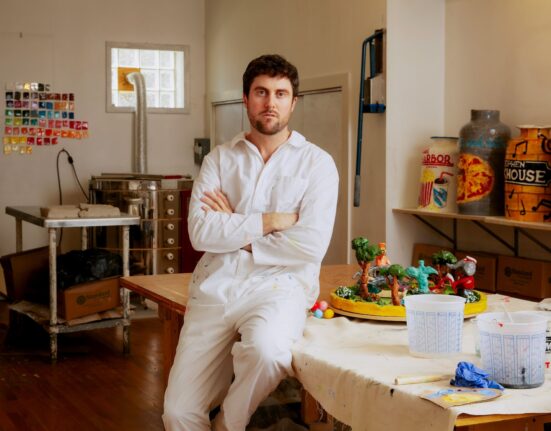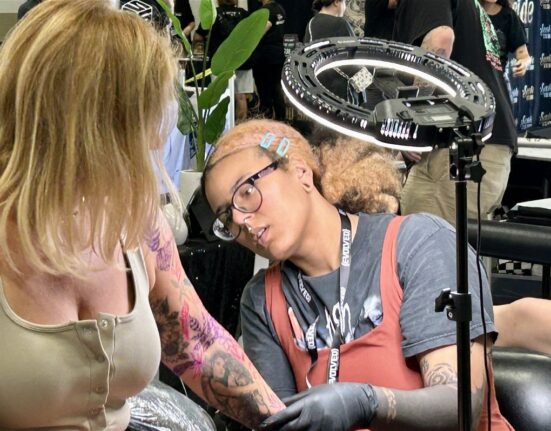I’ve spent the greater part of my career building a sustainable, professional arts non-profit in Jersey City. In 2005, with $3,000 and a group of dance artists, I started Nimbus Dance. Next year we will celebrate 20 years in existence, during which time we have grown to become New Jersey’s largest contemporary dance organization, serving over 16,000 people each year in Jersey City, statewide and nationally.
Over these years, I’ve learned much about the arts field in Jersey City – available resources, funding mix, demographics and audience base. I’ve learned how essential it is to have a compelling mission, a plan to serve the community, and local support. I’ve also learned how difficult it can be, even with those elements in place, to fund an arts organization of any size. I care deeply about the arts in Jersey City and believe smart investments in the arts are crucial to our city. I question the viability of Pompidou x and am concerned that its business plan is implausible.
The arts have always been central to our diverse and dynamic city. But Jersey City arts organizations have consistently struggled to become established here. While other New Jersey municipalities boast well-established museums, theaters, orchestras, and other cultural institutions, Jersey City arts have struggled. In 2011, we lost our museum due to lack of funding and, aside from Nimbus, Jersey City supports no arts non-profits with budgets over $1million. Following years of advocacy by the arts community, the city has made some important steps to invest in the arts in Jersey City such as launching the Jersey City Arts Trust, and supporting new arts facilities constructed through partnerships with private developers, including the Nimbus Arts Center. But, as energetic and creative as the local arts scene is, the lack of funding sources – government, corporate, foundation or philanthropic – has meant Jersey City hasn’t developed a resilient non-profit arts sector.
In 2021, the City Government announced that the Centre Pompidou, a Paris-based contemporary art museum, would open a satellite branch — Pompidou x — in Jersey City. Funded with a $10 million municipal bond, $60 million in state allocations, and tens of millions in tax credits, this venture was both extraordinarily ambitious and, also, unorthodox in its almost complete reliance on public funding. Fast forward to this May, with construction yet to begin and little information about the financial plans to cover the museum’s annual operating cost of $23 million, the New Jersey Economic Development Authority announced that it would withhold state allocations. The Jersey City administration has responded that they believe there is a path forward for Pompidou x.
It is possible that a group of benefactors committed to Pompidou x will come forward to ensure its funding. It is possible that large development interests in the Journal Square area will step in to support this project – clearly it is a boon to property values in the area. It is also possible that funding from Franco-U.S. diplomatic channels will materialize to support this proposed institution. If the Pompidou x project is viable, by all means let’s proceed. But, as the state has said, it is high time that the Jersey City municipal government proves its critics wrong by transparently revealing how, beyond city and state subsidies, it will fund the museum for its first 5, 10, 15 years of operation.
Founding a new multi-million-dollar cultural institution requires immense support and subsidies from private and institutional donors, and most importantly, from the public. Aside from city and state government allocations of taxpayer dollars, projections indicate $15 to $16 million will need to be raised annually to keep Pompidou x open. That breaks down to a minimum of 10 to 20 six and seven-figure, multi-year donor commitments each year, and an additional 80-100 four and five-figure donors to open and sustain the museum, each year.
Fundraising on this scale in New Jersey has only been accomplished by the state’s largest arts non-profit, NJPAC, and would surpass the fundraising of the rest of the state’s most established arts organizations: New Jersey Symphony, Newark Museum, and McCarter Theater. To put this in local perspective, Jersey City’s three largest arts non-profits collectively raised $1.37 million in contributed income last year. To be solvent, Pompidou x would need to raise 12-13 times that amount, without the benefit of 55 years of community-building and patron development that these three organizations have collectively invested. Where will all these donors come from?
If the spigot of Jersey City and New Jersey taxpayer funds doesn’t flow, Pompidou x will shut its doors.
An essential factor here is the dynamic between the Paris-based Centre Pompidou and the proposed satellite location in Jersey City. In this deal, the Pompidou is an outside contractor, engaged for a $5 million annual “licensing fee.” They have no skin in the game. An arts institution must be built around a strong mission, supported by invested stakeholders. Then the enterprise becomes resilient in the face of fluctuations in financial support. That is not the case here. If the spigot of Jersey City and New Jersey taxpayer funds doesn’t flow, Pompidou x will shut its doors. Revelations about the unstable state of the Pompidou’s finances indicate that the Jersey City branch is likely seen as a profit-making opportunity for the Paris museum – far different from the mission-based commitment that is required for a truly sustainable institution serving the public.
If the Centre Pompidou is only as committed as the next $5 million “licensing fee” payment, why would any deep-pocketed donor make the kind of major contribution that will be required for the museum’s solvency, knowing that the people running the institution are only committed through the next year’s payment? Why would any major donor see Pompidou x an opportunity to make a legacy gift if the museum has no committed base of support and is subject to shifting political winds?
Jersey City got it right about investing in the arts: the arts should have a central place in our city’s growth and emergence. Investment in the arts, along with schools, and open park space (NO to privatization of Liberty State Park!), is one of the most beneficial and far-reaching ways of impacting our city. With it come economic development and jobs creation, opportunity and successful outcomes for youth, property values and retention of residents, crime reduction, social cohesion, and more!
What if Jersey City instead invested just a portion of these funds locally? Imagine the benefits to the local community, local economy, local artists, and local youth? What if, instead of bringing an international art museum we can’t afford, Jersey City supported the Jersey City Jazz Festival, one of the largest jazz festivals in the tri-state area which brings world-class jazz musicians to Jersey City each year, but operates on a shoestring? What about funding Segunda Quimbamba, renowned nationally for its work preserving and advancing Bomba y Plena, a Puerto Rican musical tradition? What if The Curtain, a local Shakespeare company, had the resources to adequately market their performances which regularly feature top international stage and screen actors? Or how about really funding non-profit organizations like Art House Productions, Jersey City Theater Center, or Drawing Rooms Gallery which have contributed immeasurably to Jersey City’s arts eco-system with exhibitions, productions, and opportunities for visual and performing artists?
How can we strategically and effectively lift up the celebrated artists who make Jersey City their home but who need to focus the majority of their work elsewhere because of lack of local opportunity? Artists like tap dance virtuoso Jason Samuels Smith, jazz percussionist Winard Harper, former American Ballet Theatre principal dancer Sarah Lane, and visual artists Danielle Scott and Bryant Small are here. I would be remiss to leave out the 40 plus professional dancers and teaching artists that my organization Nimbus Dance employs, who bring their dedication and honest, inspiring artistic integrity to Jersey City youth and community every day – and proudly represent the City of Jersey City on tour nationally. These Jersey City all-stars are the kinds of artists we should be cultivating and supporting.
Arts investment must be done thoughtfully, with community input, and with clear-eyed planning for sustainability. Let’s correct our course, build a strong, enduring foundation for arts and culture by investing in Jersey City’s people, artists, and arts organizations. The results will be long-lasting, transformative, renewable, and most importantly, our own.







